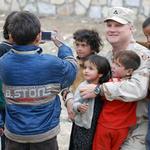Refugees in the City - a new approach to the refugee crisis
An increasing number of refugees live in poor neighbourhoods in towns and cities across the Middle East. Yet, we hardly know anything about them. Without accurate information, how can donors assist them? The new Refugees in Cities project will provide important insights to their situation and how to assist them.
"While refugees who live in urban areas are the largest refugee category, we still know very little about them."
Are John Knudsen is the leader of the new project Urban displacement, development and donor policies in the Middle East. Knudsen and an international team of researchers seek to expand our knowledge on refugees who live in urban areas. Historically, most of the research on refugees have targeted those settled in refugee camps, and tended ignore the many more settling in cities and towns. This is especially the case in the Middle East, a premier refugee region with one of the worlds' highest urbanization levels. How can host countries and donors assist those that reside among urban poor in inner-city slums? Many of the Syrian refugees now live in cities in the Middle East, surviving in the informal housing and labor markets. Aiding a large number of refugees living in cities is a new, and major, challenge to humanitarian policy. Traditionally, refugee aid policies have seen refugee crisis situations as temporary, hence camps as emergency response made sense. However, long-term ("protracted") refugee displacement turn camps into permanent structures, often far away from existing infrastructure, jobs and markets.
"Refugee crises can no longer be viewed by states and policy makers as temporary. We know that many urban refugees do not return and that more are coming. Aid policies must begin to reflect the permanence of this situation."
This project aims to find new ways to assist the urban displaced, through extensive fieldwork in Iraq, Jordan, Lebanon and Turkey. How can humanitarian and development policies be re-designed to accommodate for refugees that settle in urban areas? By combining data from a eight field sites the Refugees in Cities project will map who settles in cities and towns, where, when and why they settle there as well as the socio-economic outcomes of different national policies.
Urban migration creates new challenges
"Cities and towns have become major sites of displacement, but aid policies have not kept pace with this urban transition".
Urban areas offer new challenges and opportunities for humanitarian policies, which this research project will examine in depth. For many refugees, cities are viewed as their best option in order to provide for themselves and their families. While the size and complexity of cities account for many of the problems facing refuges, they are also part of the solution. Cities have larger and often unregulated labour markets, more shelter options and ready access to health and school facilities. Cities and towns can also offer greater freedom of movement and foster self-reliance as well as better prospects for successful socio-economic integration and entrepreneurship.
However, cities can also turn into "poverty traps", were the refugees survive below subsistence levels. Urban refugees also compete with other urban dwellers for housing, jobs and services. This can strain host-guest relations and cause a backlash against refugees both on the local and national level. While host states have taken in millions of refugees, they do not have the resources to provide for them. A proposed solution to these challenges is the so called "area-based approach". This represents a paradigmatic shift towards a participatory approach where humanitarian agencies help national and local authorities to expand services and amenities for the urban displaced and the host population alike.
"This will be an innovative way of dealing with the refugee situation, which is adapted to the present situation and not the refugee crises of the past."
By supporting host populations and refugees alike, the area based approach can reduce hostility towards refugees, provide better public services and upgrade the infrastructure to the benefit of all.
Collecting data for future policy reforms
The Urban displacement project will collect quantitative and qualitative data that can be used to pilot area-based policies and approaches that can inform both host states and donor policies.
"We believe that in the future refugee policies will involve a much greater focus on city dwelling. Hopefully, we can show that urban refugees can be a resource and not as today, a burden."
This is one out of five exiting new research projects that received funding from the Research Council of Norway's NORGLOBAL programme.
Written by Maria Bakke Ulvesæter
Publications
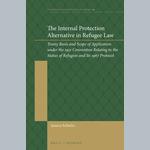
The Internal Protection Alternative in Refugee Law: Treaty basis and scope of application under the 1951 Convention on the Status of Refugees and its 1967 Protocol
Ingen Trygg Havn i Kabul
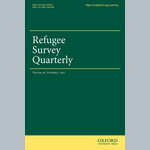
The Great Escape? Converging Refugee Crises in Tyre, Lebanon
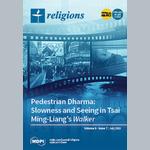
Vernacular Politics, Sectarianism, and National Identity among Syrian Refugees in Jordan
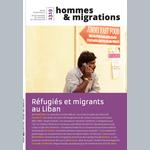
Campements, abris et squats: Des zones floues où vivent les réfugiés syriens au Liban (Camps, shelters, squats: Syrian refugees in Lebanon’s twilight zones)
Feilslutninger i norsk asylpolitikk
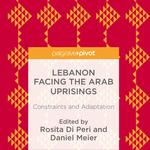
Syria's refugees in Lebanon: Brothers, burden and bone of contention
Projects
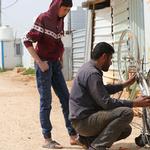
Urban Displacement, Development and Donor Policies in the Middle East (URBAN3DP)
